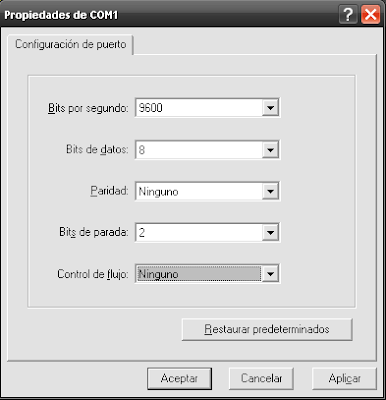Here I bring a very basic project on automation, control electrical appliances using PC
In this case a 4-control 4N25 optocoupler with phototransistor connected to a connector to connect a board to electrically isolated power.
The main circuit consists of a PIC16F84A MCU based on a RS232 interface with MAX232 and a 2x16 LCD with Hitachi 44780 controller. The RS232 protocol should be set to 9600 bits per second, 1byte data, No parity, 2 stop bits and no flow control. (9600.1, N, 2, N). For the test, use the HyperTerminal that comes default on WindowsXP, but can be any other. Once inside the HyperTerminal and
Then leave the circuit, and some pictures of the project.
This link all images are available but the source and compile.








